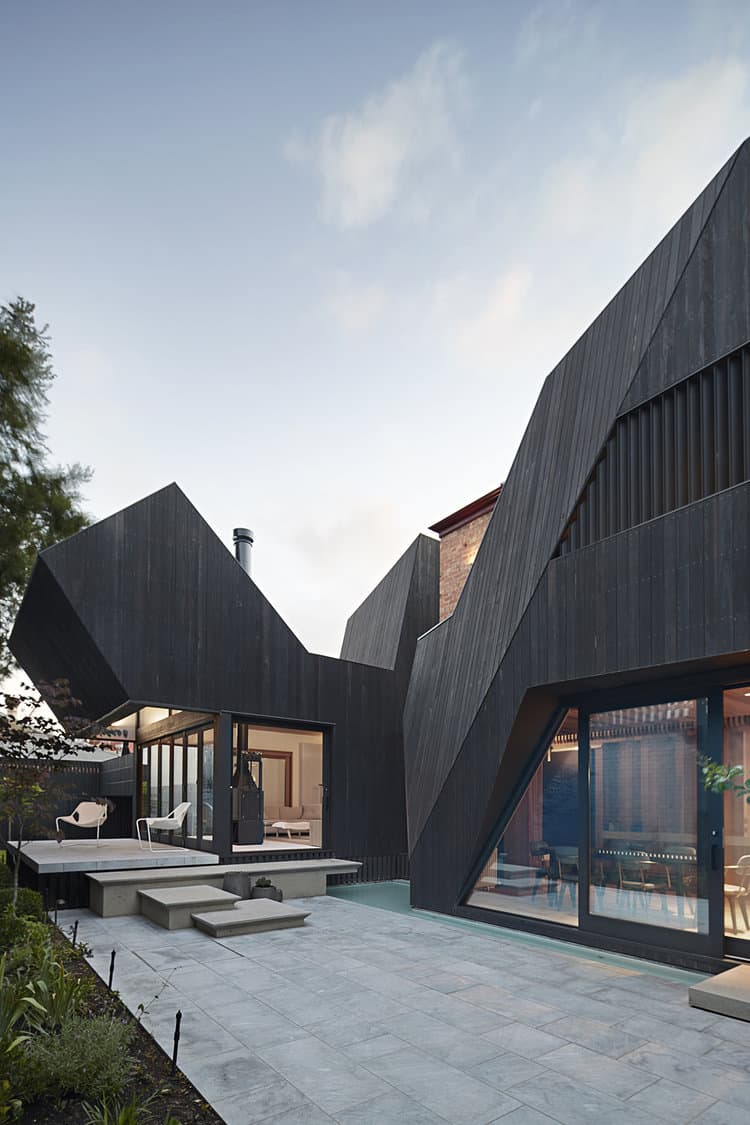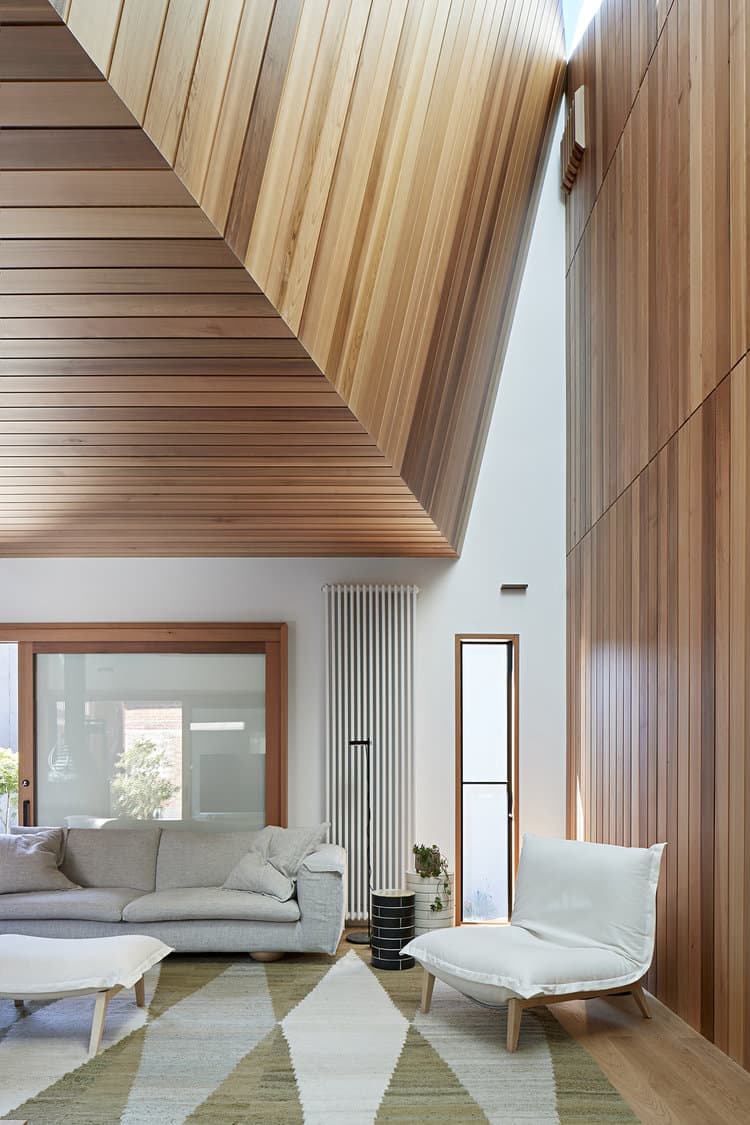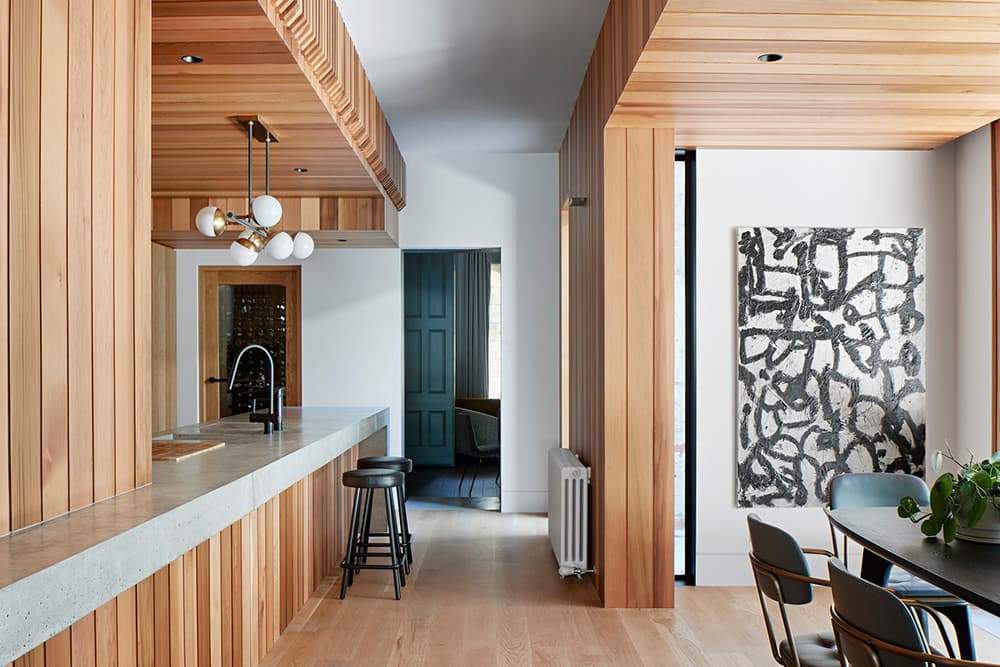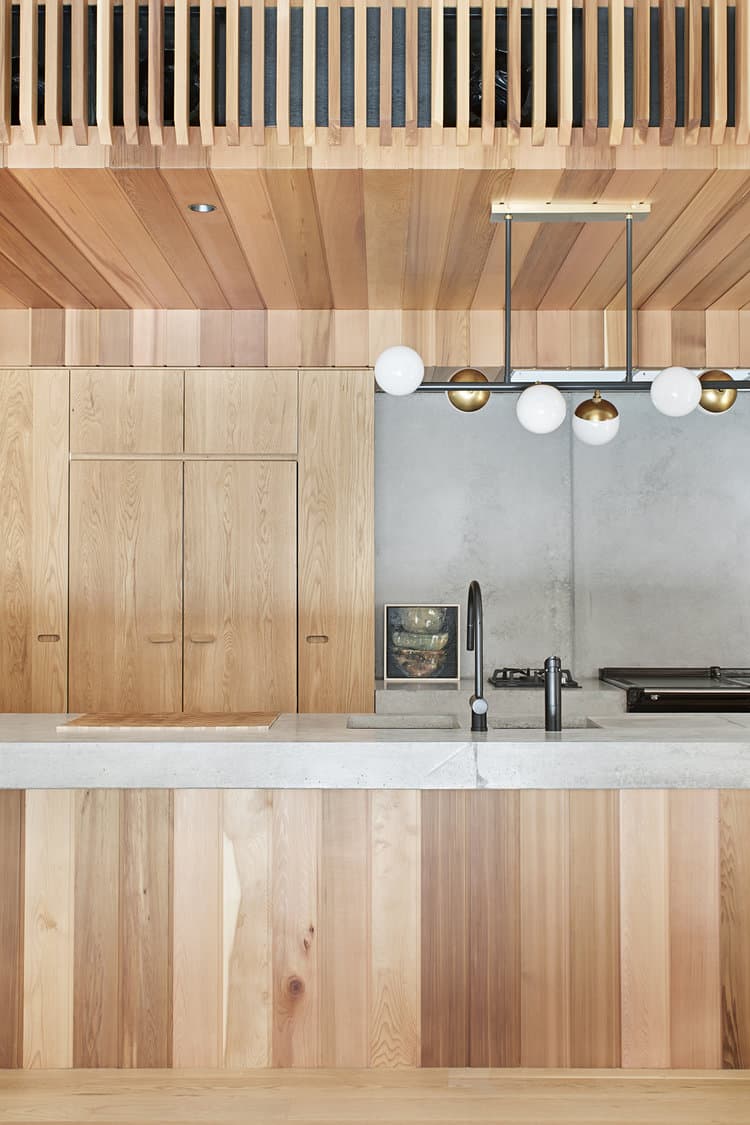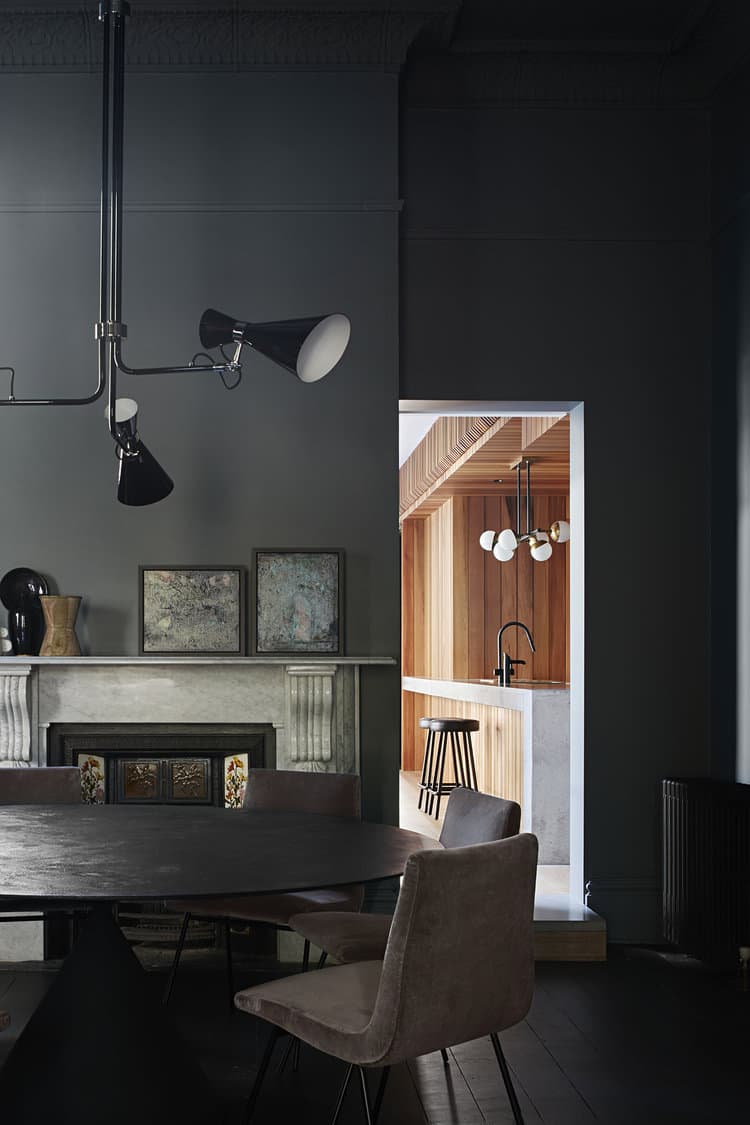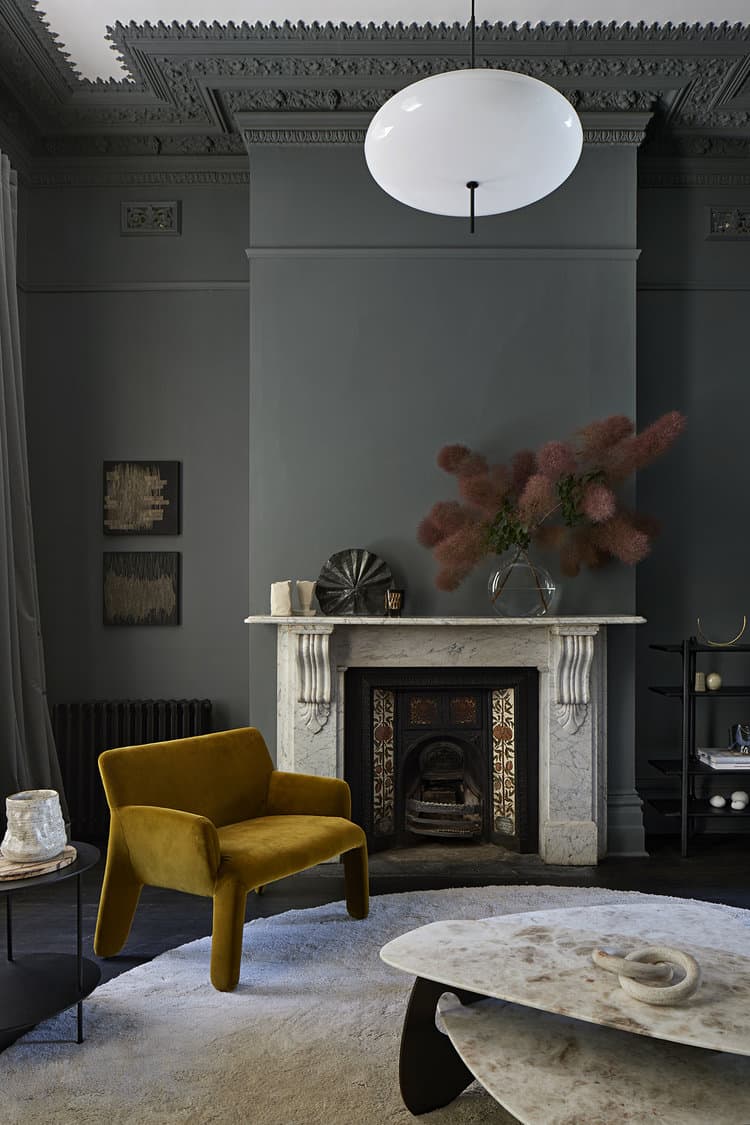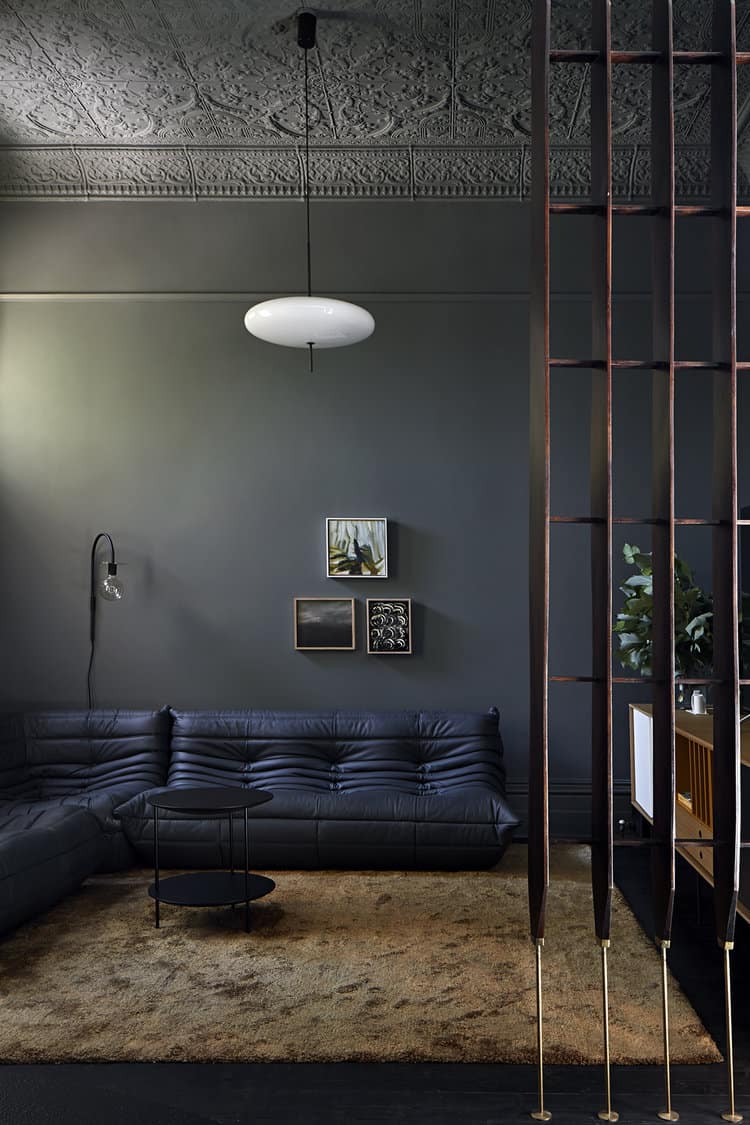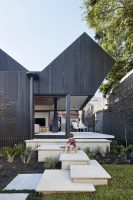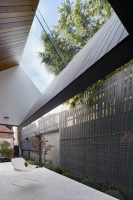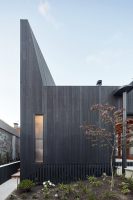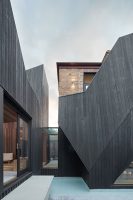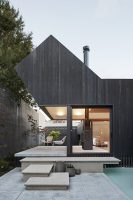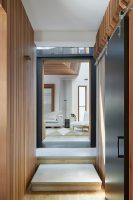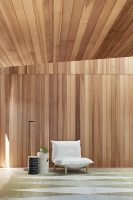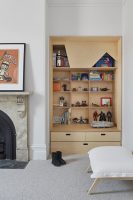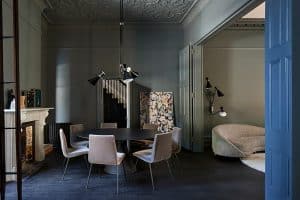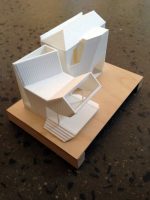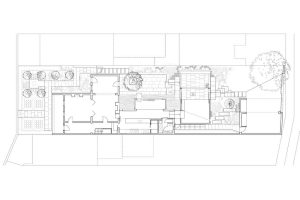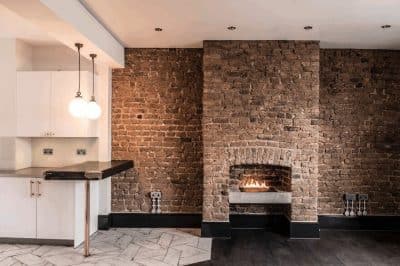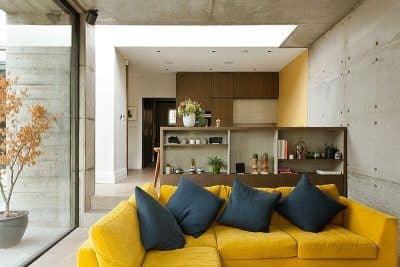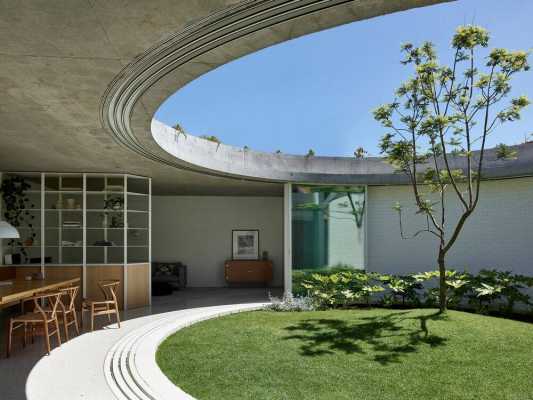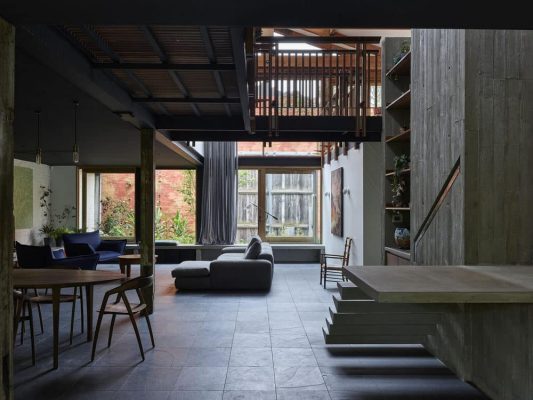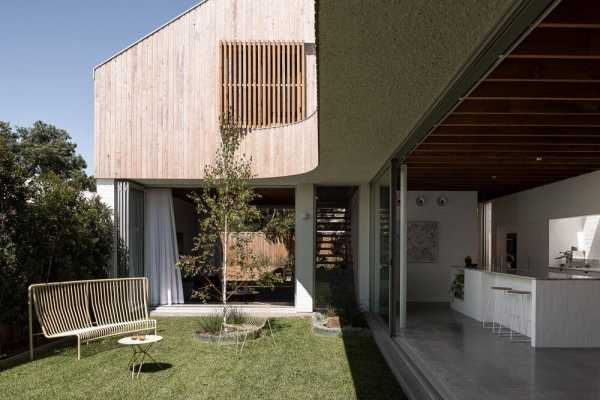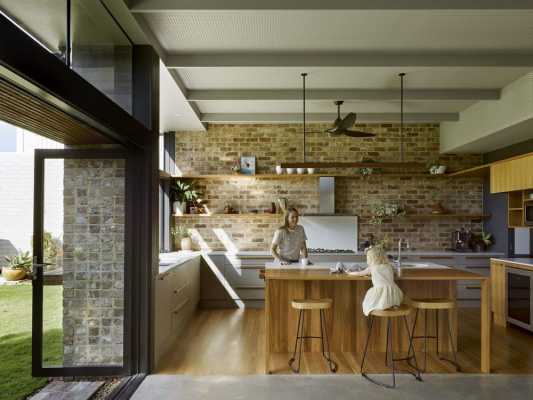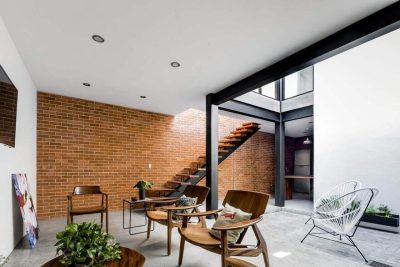Project: Hatherlie House
Architects: Andrew Simpson Architects
Project Team: Andrew Simpson, Simona Falvo, Ryan Bate, Danielle Mileo, Emma Parkinson, Louis O’Conner
Landscaping: Renata Fair Garden Designs
Furniture, Objects, Art + Styling: Simone Haag
Location: North Fitzroy, Melbourne, Australia
Completed: 2017
Builder: Overend Constructions
Photography: Shannon McGrath
Hatherlie House is a late 19th century terrace house of individual heritage significance, located in the inner city suburb of North Fitzroy. Originally constructed for the financier Samuel Lazarus, the building forms an important backdrop to Australia’s cultural history. Lazarus was eyewitness to the Eureka Stockade and one of the few who provided a written record of these events. He later served as jury foreman for the trial of Ned Kelly.
The Hatherlie house sits on a double width block and has an unusual, smaller gabled roof component that flanks the main terrace. In the front garden is a line of pencil pines that, combined with the polychromatic brickwork, create a distinct presence for the building located at the bend of the street near the top of the hill.
The unusual configuration of the existing house precipitated an extended conversation with the owners about what initially attracted them to the property. We were fascinated by their admission of being Italophiles with a fondness for the landscape of Tuscany where they were married. Some characteristics of Hatherlie house resonate with the iconic Italian villa of 15th century: the siting of the building at the top of a hill; the central courtyard; the line of pencil pines; the use of water (the original house had a centrally located pool); and the importance of landscape, all contributed to this inference. Our interventions into the fabric of the house focused on these characteristics with a loose reference made to Alberti’s ‘Of the Country House for a Gentleman’, in which he describes the importance of an integrated approach to landscape and architecture.
The built and soft landscape is key to knitting the heritage building to the contemporary extensions of living, kitchen, study, laundry and meals areas. We worked closely with Renata Fairhall Garden Designs to create a series of overlapping spaces that resist clear definition as ‘architecture’ or ‘landscape’. While the front portion of the house remained intact and was essentially restored, the mid-20th century additions in the centre of the property were demolished along with part of the ‘stables’ located at the rear boundary. The stables accommodate off-site car-parking, with a guest residence above accessed via an external spiral stair. Like much of the circulation through Hatherlie, this is part of a series of circuitous, lyrical pathways which reveal the house episodically.
The geometry creates varied spatial experiences, expansion and contraction horizontally and vertically, reinforcing the series of stepped courtyards. The new living room extension mirrors the roof profile of the gabled roof of the front façade and becomes a raised platform, analogous to a hill, offering extended views to the garden. Water returns to the house as a reflection pond that brackets the new kitchen extension.
The material palette is a dedicated commitment to the use of natural materials: solid cedar wall and ceiling linings, solid American oak joinery and floorboards, off-form concrete benchtops and splashbacks, hand-made brass sinks, limestone and bluestone paving, and charred (Yakigugi) silvertop ash cladding.


